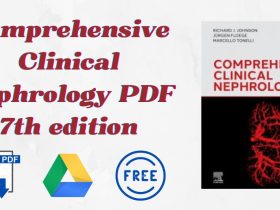Deep learning has emerged as a strong technique in cancer diagnoses, allowing relevant patterns and characteristics to be extracted from complex medical data. This paper focuses on the use of feature-based transfer learning in deep learning models for cancer detection. This technique intends to increase diagnostic accuracy, minimize training time, and facilitate the incorporation of deep learning into clinical practice by exploiting pre-trained neural network designs and tailoring them to specific cancer types.
Features of Deep Learning in Cancer Diagnostics PDF
- The first section presents an overview of cancer diagnostic issues and the possibility of deep learning to address them. It emphasizes the necessity for precise and efficient cancer detection, classification, and prediction technologies. The essay emphasizes deep learning algorithms’ ability to discover intricate patterns from large-scale information, as well as their potential to revolutionize cancer diagnosis.
- The following section defines transfer learning, which occurs when knowledge obtained from one task is applied to another related one. Feature-based transfer learning entails adapting pre-trained deep neural network architectures like VGG, ResNet, or Inception to specific cancer diagnostic tasks. The article investigates how transfer learning can speed up model training, increase performance, and reduce the requirement for large labelled datasets.
- The method of selecting acceptable pre-trained models for cancer diagnoses is discussed in this article. It emphasizes model architecture, complexity, and the availability of pre-training data. The section also shows how the selected models are adapted to the target cancer diagnostic task, including freezing and fine-tuning certain layers and inserting domain-specific information.
- The evaluation of deep learning models in cancer diagnoses is the subject of this section. It goes through commonly used evaluation measures like accuracy, precision, recall, and F1-score, as well as how to interpret them in the context of a cancer diagnosis. The need for comprehensive performance assessment and validation is emphasized throughout the essay to ensure trustworthy and reproducible findings.
- The article finishes with a discussion of the future possibilities and challenges of deep learning in cancer diagnoses. It emphasizes the significance of dealing with difficulties like interpretability, data heterogeneity, and model generalizability. The paper also delves into the possibilities of multimodal data integration as well as the significance of deep learning in precision medicine and personalized treatment strategies.
Contents of Deep Learning in Cancer Diagnostics PDF
- The Role of Deep Learning in Cancer Diagnostics
- Feature-Based Transfer Learning
- Selecting and Adapting Pre-trained Models
- Evaluation Metrics and Performance Assessment
- Case Studies and Results
- Future Directions and Challenges
We show some opinions of the book readers
The landmark book “Deep Learning in Cancer Diagnostics: A Feature-based Transfer Learning Evaluation” investigates the integration of deep learning techniques in the field of cancer diagnostics. The book, which focuses on feature-based transfer learning, provides useful insights into exploiting pre-trained neural network architectures to increase diagnostic accuracy and speed deep learning model construction.
Download Deep Learning in Cancer Diagnostics PDF
To download and read The Deep Learning in Cancer Diagnostics PDF use the download links mentioned below :
Get a Direct Download link to The Deep Learning in Cancer Diagnostics





Leave a Reply